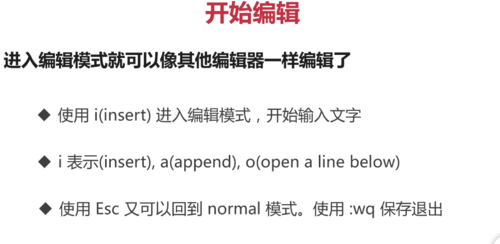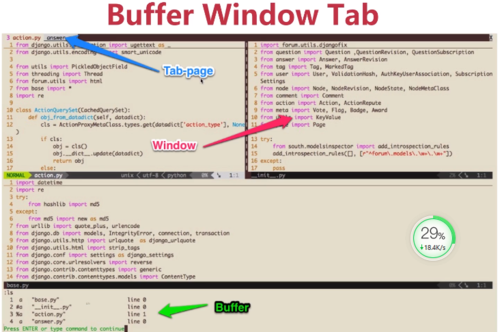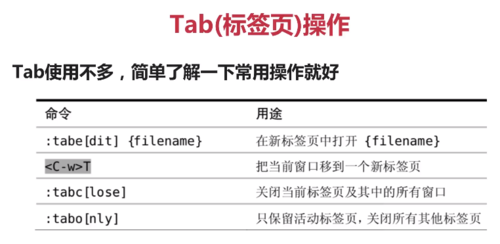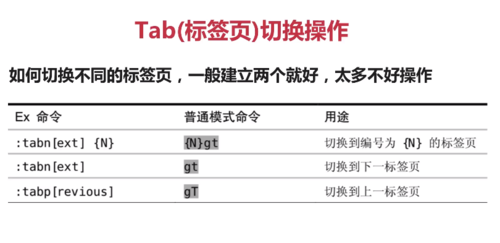-
替换命令。
查看全部 -
daw : delete a word
dt{char}: delete to the char
dd : delete the row
x : delete a char
c : change
c : change a word
查看全部 -
移动命令。
w : next word head
e : next word end
b : previous word head
f{char} : find a char in the line
; : to find the next same char
F{char} : do f in reverse
0 : move to the head of the row
$ : move to the end of the row
gg : move to the head
G : move to the end
^o : go back the privious
H/M/L : move the head / middle /lower of file
^u : pageup
^f : pagedown
zz : set the screen to the middle
查看全部 -
^h 删除上个字符
^w 删除上个单词
^u 删除至开头
^[ Esc
Shell
^a 跳转到开头
^e 跳转到结尾
查看全部 -
:vs 分屏查看全部
-
:set nu查看全部
-

命令模式 :
可视化模式v
查看全部 -
。。。iao IAO 的功用
查看全部 -
开始编辑了
 查看全部
查看全部 -
text-obj:
四个命令:c(hange)、d(elete)、v(isual)、y(ank)。
基本模式:次数+命令+文本对象,例如3dw。
其他命令:(v|c|d|y)(i|a)('{'|'['|'<'.....),表示(选中|改变|删掉|复制)(不包括|包括)定界符以内的)文本。
查看全部 -
vim 更换配色
查看全部 -
常使用的三种补全方式
查看全部 -
vim 中补全方式
查看全部 -
:set paste
再次进入插入模式粘贴时缩进不会乱(经常遇到这个问题)
:set nopaste
取消上诉操作,缩进功能回来
小技巧:x:删除当前字符,p 粘贴 xp(互换字符)
"+表示复制到系统剪切板中,这样就可以在 vim 和其他编辑器中来回复制了
:set clipboard=unnamed 可以直接复制粘贴系统剪切板中的内容
查看全部 -
一、buffer、window、tab概念
buffer:内存中开辟的区域,我们所作的更改都先映射到此区域,当进行w命令时才写入磁盘。
window:文件的可视窗口。
tab:多个window组合的类似工作区的东西。

二、打开多文件
e path/filename 打开另一文件;
`ls`命令可查看当前所有打开文件的缓冲区,
`b[n]` 或者 `b filename`打开第几个缓冲区 或 打开特定文件名的缓冲区,
`bpre、bnext、bfirst、blast`打开对应含义的缓冲区
三、window的创建、切换
创建:<ctrl+w>s或者sp水平分割,<ctrl+w>v或者vs水平分割。
切换:<ctrl+w>hjkl,代表向左下上右切换window,<ctrl+w>w window间的循环切换。
移动:<ctrl+w>HJKL,代表向左下上右移动window
重拍窗口: h window-resize查看文档
四、创建tab、tab间的切换

 查看全部
查看全部
举报






